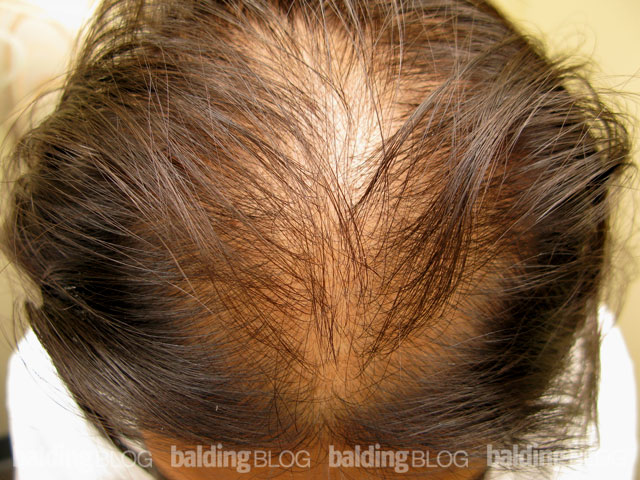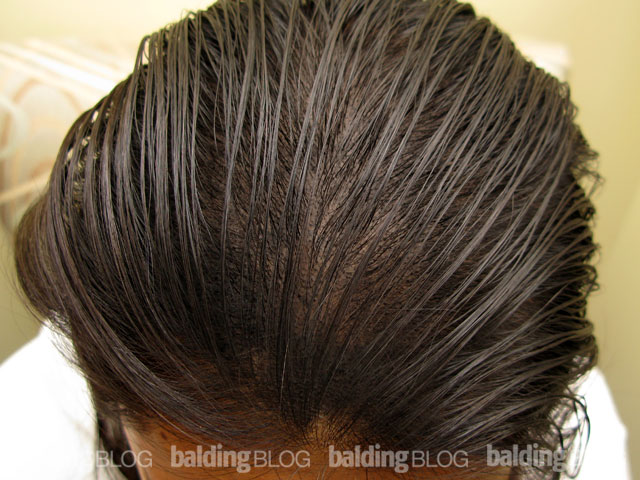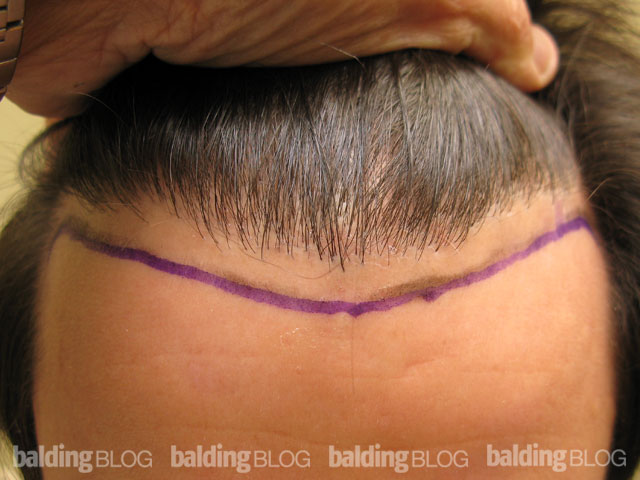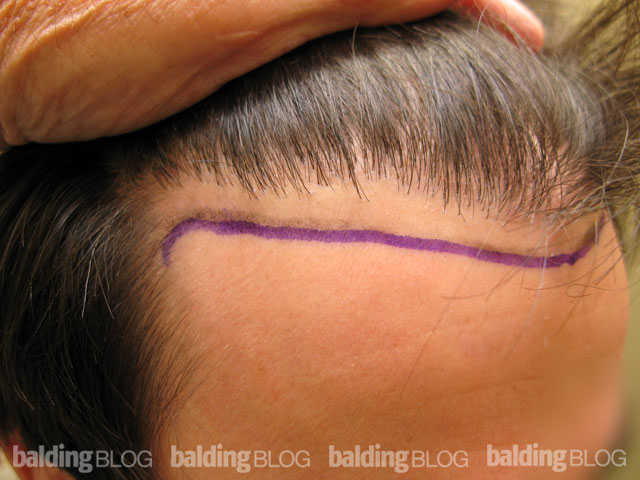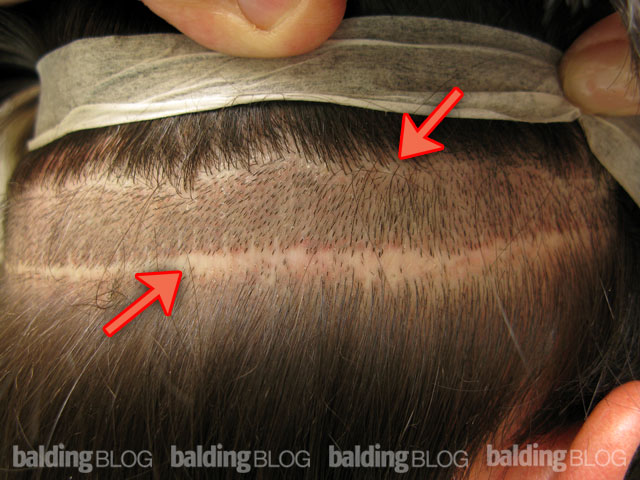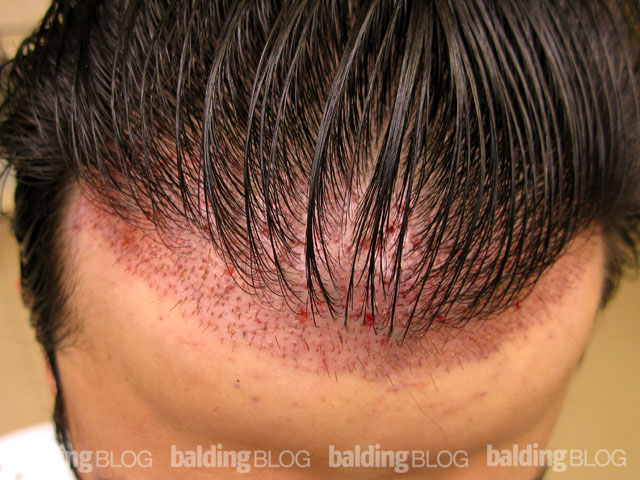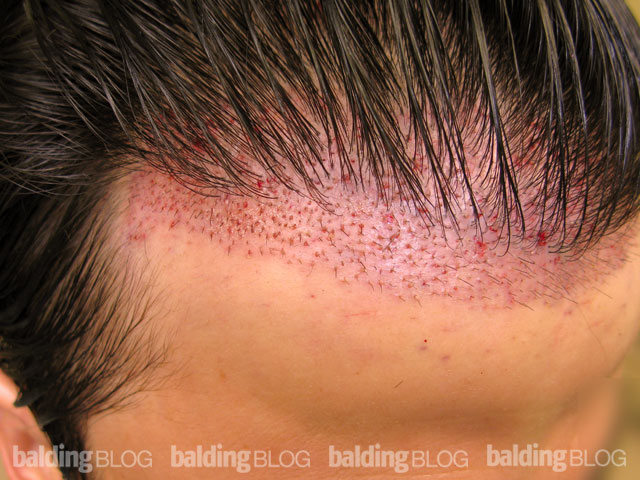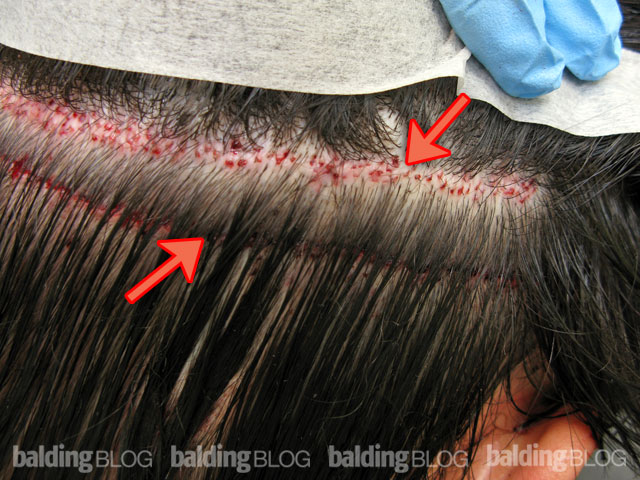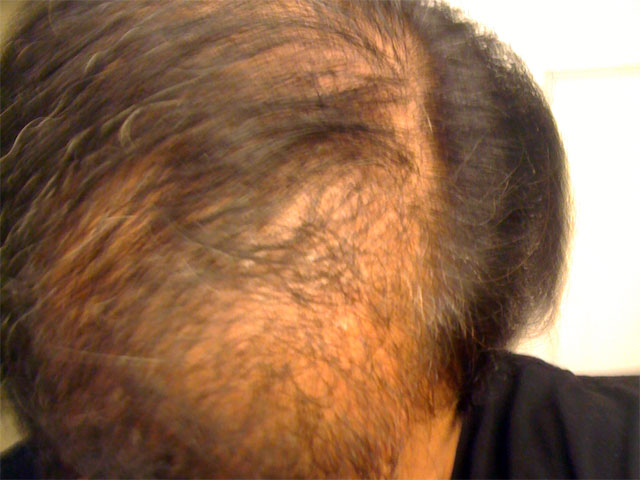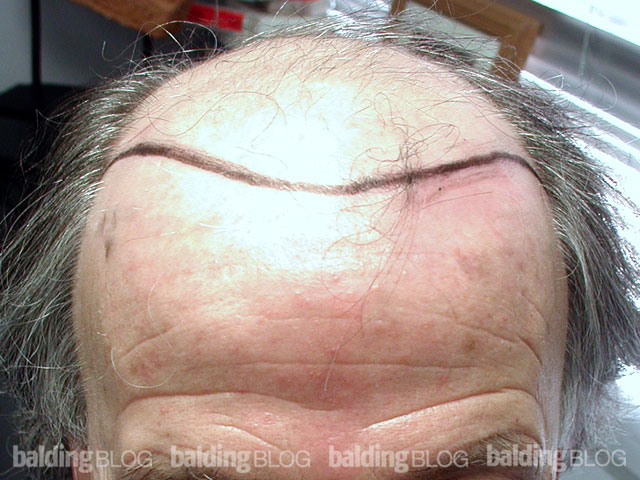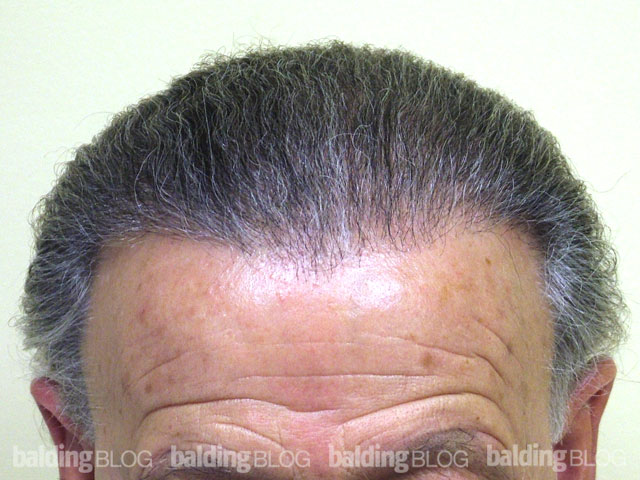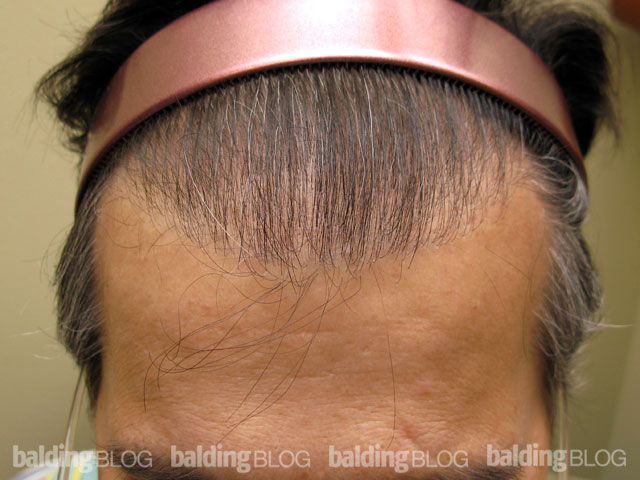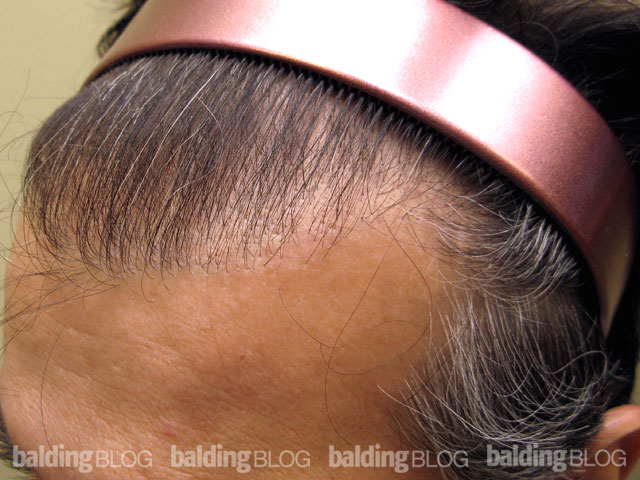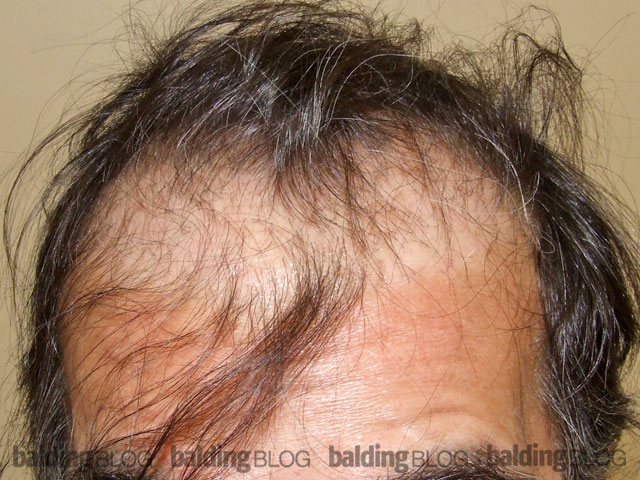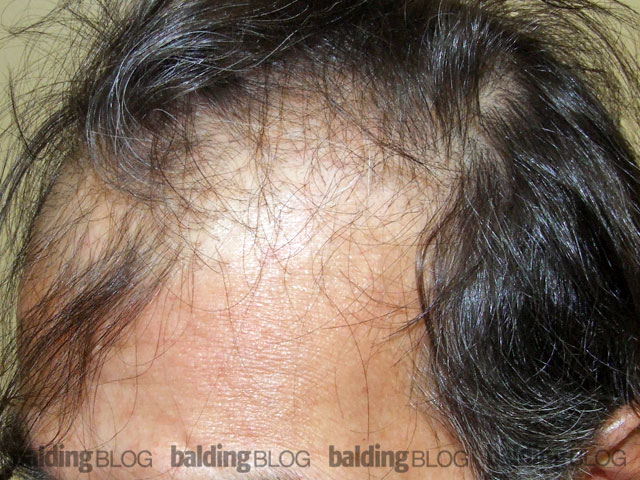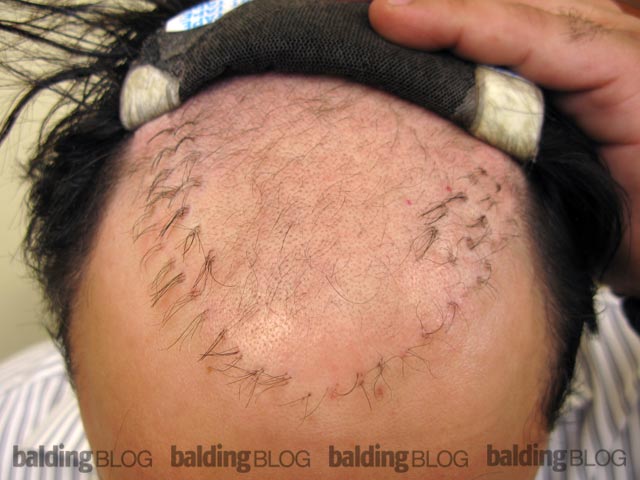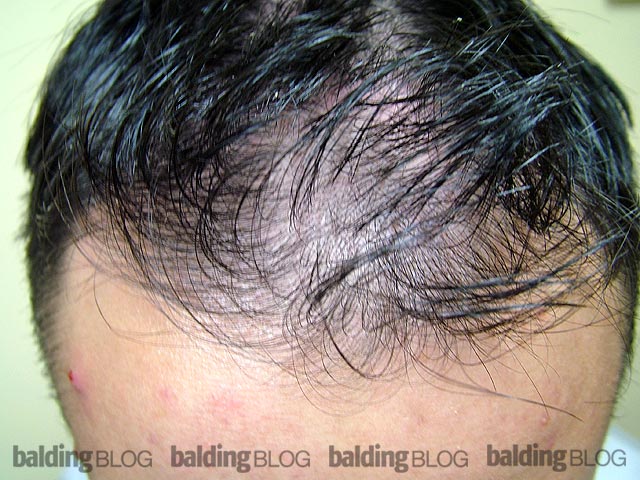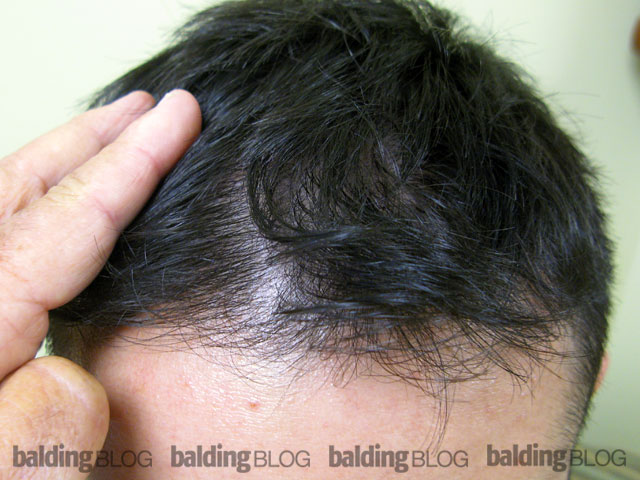This patient is the 3rd member of his family to receive a hair transplant from us. His older brother received approximately 9000 grafts in the early 90’s, and his father (a full Norwood Class 7) has had close to 10,000 grafts transplanted with one of the most remarkable results I’ve ever seen as he almost had a full head of hair. He still has reserves of hair for more transplants, which I do not believe he needs.
Of particular interest, all 3 family members had very high densities. In fact, the father and the older brother had the highest densities that I have ever recorded in the donor area: around 4 hairs per square mm. This sort of high density reflects a hair population on the head of approximately 200,000 hairs, when normal for a Caucasian is around 100,000. Along with the artistic skill of the surgeon, this is what enabled us to transplant so many grafts in a single session.
So now the youngest son has followed in his family’s footsteps with 3188 grafts — approximately 1400 grafts in and behind the frontal hairline, with the rest of the grafts transplanted into the crown. Despite being only 10 months out from his first and only hair transplant, this patient is already extremely pleased with the results he’s seeing. Click the photos to enlarge!
After one procedure of 3188 grafts:
Before:
Transplant area immediately after the procedure:
—
Update: More info can be found here!
